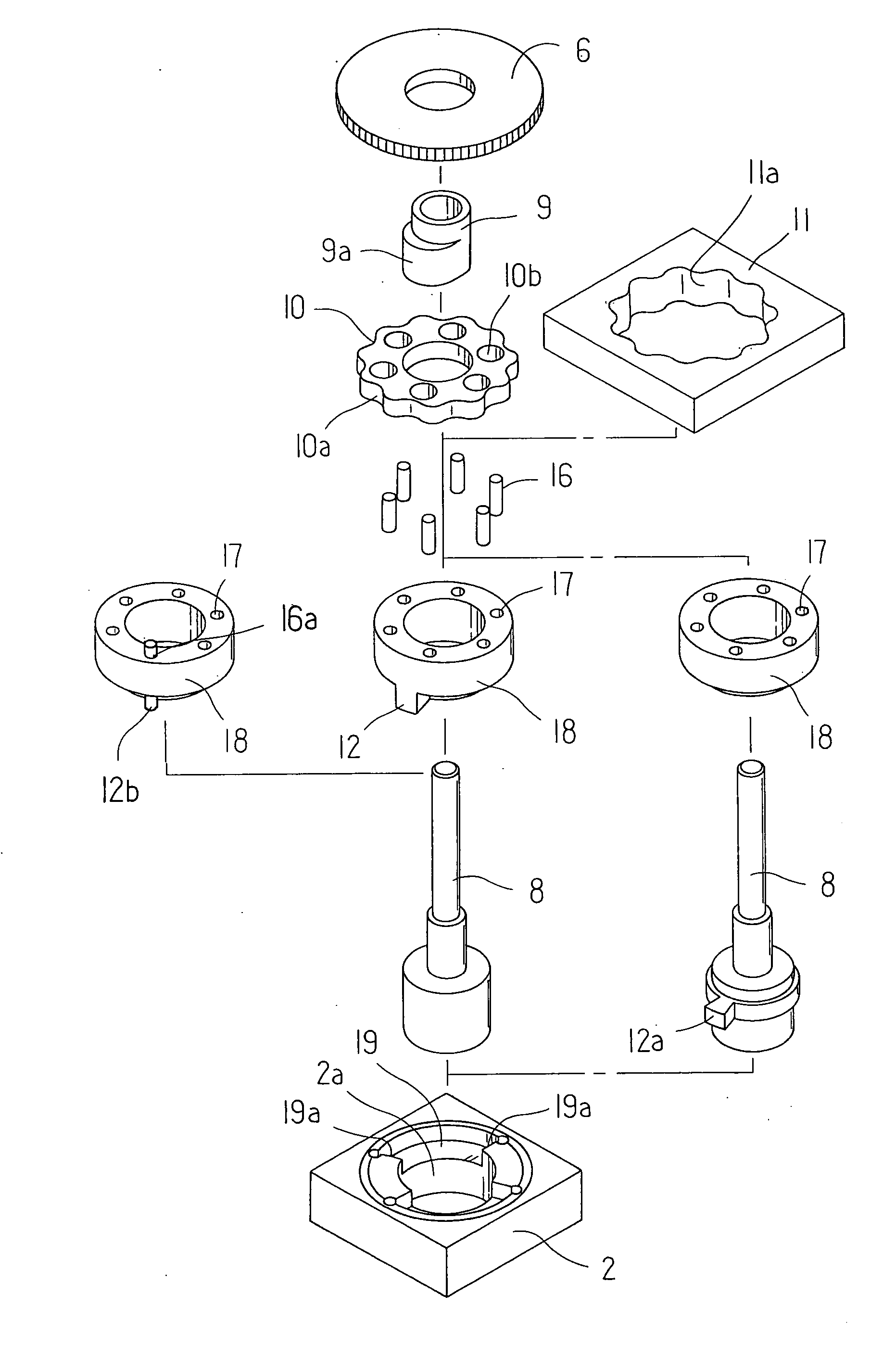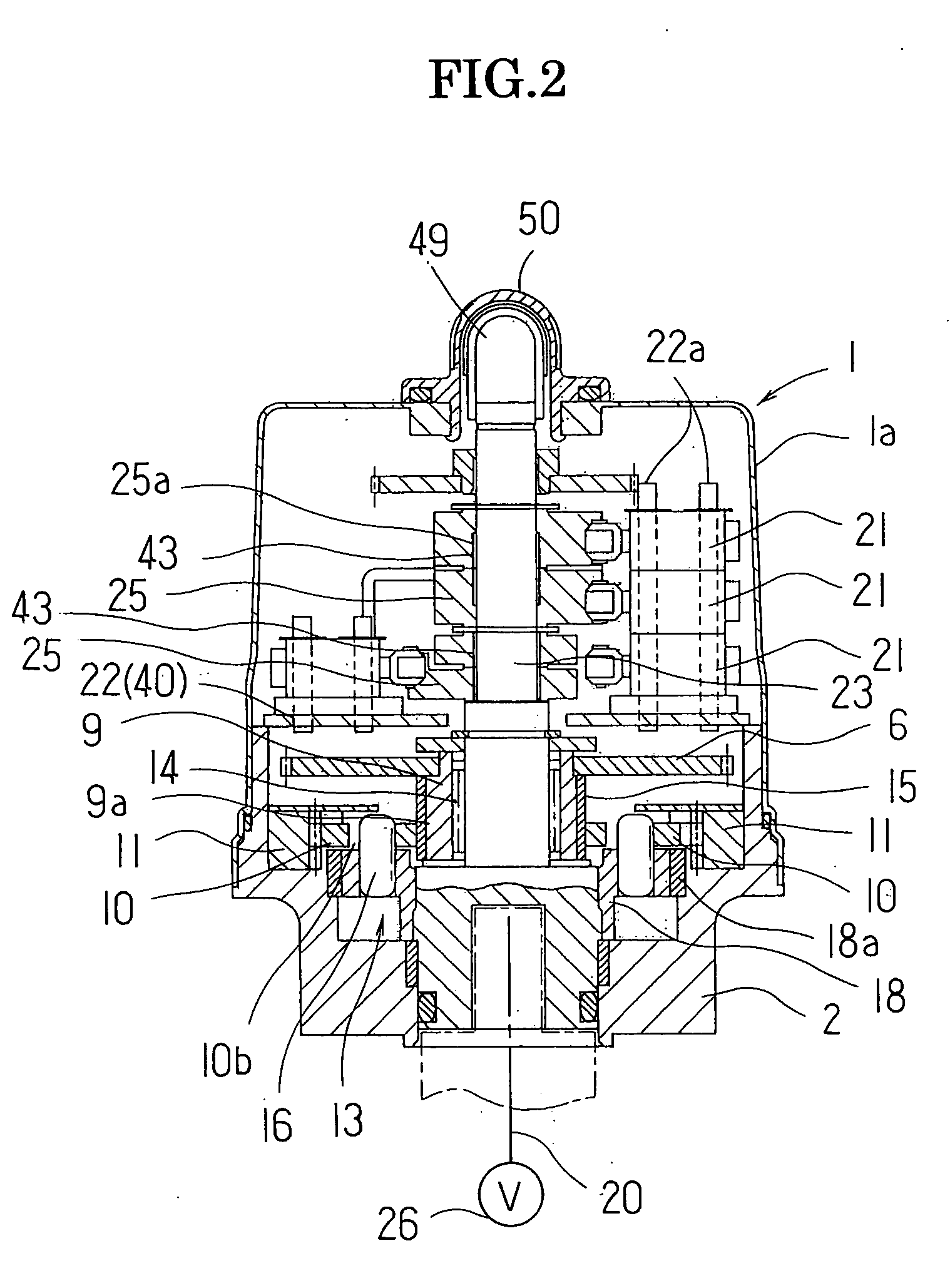Since the actuator for the valve which has the aforementioned built-in speed-reducing mechanism requires to secure a wide space between the output shaft and the rotary shaft of the motor because of the construction having numerous spur gears disposed as meshed and connected in numerous stages, it entails such problems as incurring a large addition to the size of actuator, complicating the construction, increasing the number of component parts and boosting the cost.
In the ON or OFF operation effected by depressing the point of contact of a
limit switch by means of a
cam, for example, when the relation of relative positions of the
cam and the
limit switch produces a deviation or when the
limit switch produces a malfunction, the actuator possibly fails to switch the valve body within the prescribed range of
valve opening and induces erroneous supply of a fluid.
The actuator entails the same problem when it is manually operated during a power failure.
Incidentally, the rotation-interrupting mechanism of this conventional operating principle is aimed at restraining and releasing the rotation of an annual inner sun gear relative to the housing and is not intended to control the range of
angle of rotation of the output shaft during the motor operation or the manual operation.
Further, when the actuator in the process of replacing the aperture-detecting members of the valve body, such as limit switches and other mounted parts, or altering the positions of disposition thereof produces a deviation in the sites of attachment or the positions of disposition, it encounters the problem of giving rise to a minute deviation in the relation of relative positions of the
cam member and the limit switch particularly during the ON or OFF operation effected by depressing the point of contact of the limit switch by means of the cam member attached to the output shaft and disabling the switching position of the value from being accurately detected.
When the actuator, in consequence of the continued use thereof, suffers the fixing position of the cam member to deviate particularly under the influence of the vibration peculiar to the
electric motor, the ON or OFF operation effected by depressing the point of contact of the limit switch encounters such problems as giving rise to deviation in the relation of relative positions of the cam member and the limit switch, preventing the switching position of the valve from being accurately detected and forcing the actuator to develop a fault.
The occurrence of an excessive torque constitutes one main cause for the fault of the actuator.
When an extraneous substance is caught in the
train of gears forming a
motive power transmitting mechanism in the course of an electric operation (conducting period), the gears which are disposed as fixed in a manner incapable of generating a relative rotation with the
motive power transmitting shaft by key
coupling or pin
coupling result in developing an unduly large load by
biting the extraneous substance and possibly suffering the
electric motor to incur a trouble, such as burning.
Similarly during the course of a manual operation (period of power failure), when an extraneous substance is caught in the
train of gears forming the
motive power transmitting mechanism, the output torque generated in excess of the prescribed range, namely the excess torque, by the manual operation gives rise to such problems as exerting an unduly large load on the gears forming the gear unit, eventually inflicting damage on the gear unit and preventing the motive
power transmission by the manual operation from being effected and the switching operation of the valve body from being executed.
When the position-detecting device is adapted to be disposed on the shaft of this large
diameter, it will possibly result in adding to the whole size of the actuator.
Thus, these mechanisms entail the problem of durability because the torque load is concentrated thereon during the normal electric operation of the actuator.
During the course of the manual operation, therefore, the
valve opening-indicator will possibly approximate closely to the manual operation part and become difficult to read.
Further, since the ordinary valve opening-indicator is adapted to be covered as by a clear acrylic sheet which is flush with the upper surface or lateral surface of the actuator and consequently enabled to show the indicating part thereof on the actuator interior side through this acrylic sheet to the observer outside, it generates directionality during the
visual observation and becomes difficult to see unless it is looked at in a specific direction and renders the manual operation inconvenient.
When the accuracy of rotation of the output shaft is warped by the backlash of the gears, this malfunction results in affecting the indication of the valve opening-indicator and rendering the accurate indication of the valve opening difficult.
When the output shaft is anchored with a bush that is liable to impart a gap to the anchoring part, therefore, the output shaft possibly incurs the phenomenon of emitting vibration, namely the so-called shaft run-out.
With this plate, it becomes difficult to effect accurately the ON or OFF operation of the
control switch.
The run-out of the output shaft brings such problems as rendering accurate detection of the state of rotation of the output shaft difficult, suffering the output shaft to develop a malfunction and preventing the valve body from being accurately controlled in the state of opening, closing and a prescribed intermediate opening during the course of switching the valve.
 Login to View More
Login to View More  Login to View More
Login to View More 


